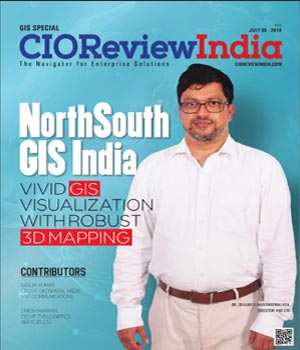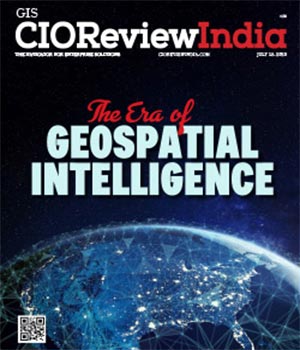
GIS' Role in Trucking and Transportation IndustrySupply Chain Management
Kirk A. Williams, President & CEO, Proficient Auto Transport | Thursday, 26 May 2016, 05:53 IST
 Rapid decision making in real time is critical in the world of supply chain management and in particular, transportation. With orders coming in electronically and the landscape of orders changing by the minute, the ability to take this information in a real time dynamic environment establishes the most efficient method of getting product to the customer and be prepared to change the plan mid to late stream and in the time frame required and/or promised via the most efficient and economical way is crucial to profitability and ultimately survival.
Rapid decision making in real time is critical in the world of supply chain management and in particular, transportation. With orders coming in electronically and the landscape of orders changing by the minute, the ability to take this information in a real time dynamic environment establishes the most efficient method of getting product to the customer and be prepared to change the plan mid to late stream and in the time frame required and/or promised via the most efficient and economical way is crucial to profitability and ultimately survival.
In the world of commercial transportation and trucking in particular, we are still dealing with the human element. The best technology available is still only as good as the user’s ability to take advantage of it. The average commercial truck driver may have a high school diploma, and many do not. In the Auto Transport industry where the driver not only drives the truck but also loads and unloads, they have to be part engineer because each and every load has a different configuration and the value of the cargo is exceptionally high. While the advantages of technology have made driving easier, safer and more comfortable for the driver, the trucking industry has done a poor job of promoting itself as a great and rewarding career path to attract younger talent, and it has been slow to integrate dynamic routing and load building. As an industry we are pretty good at it in a static environment but dynamically not so good.
The Use of GIS within trucking and transportation is taking on an ever increasing and valued role. Aside from obvious in Cab Color Screen GPS for trucks, real time traffic and accident reporting and then automated detour routing designed for trucks. The information is useful to management. There are so many accidents that occur due to detours that are not truck friendly, i.e. low hanging trees, tight turns, heavy traffic, etc. Low hanging trees and low underpasses are the greatest threat to an auto hauler.
For the driver, being able to plan his or her route knowing it is the safest and most efficient and truck friendly is critical. Moreover, taking that routing option away from the driver and providing it to them through automated algorithms dynamically is even better–provided, of course, the data is accurate.
GIS is not just helpful for the driver it is also very helpful to the load builder, route planner and dispatcher. Being able to visually see geographically where their trucks are located in real time helps immensely with planning. Decision making must be done at the micro and macro levels at the same time. When GIS data is available and fully utilized it makes planning all the better and eliminates many of the surprises that always
present themselves.
As stated previously trucking is labor intensive and for the most part a people business. Aside from the driver having to deal with 75 foot 80,000 pound trucks in heavy traffic and various weather situations, management is also dealing with change by the minute. A load is built, loaded, and dispatched only to have another order to the same destination drop in at the last minute changing everything. Dispatching several trucks to the same destination at the same time that are not full truck loads is poor planning and highly inefficient.
Providing dynamic load building by visually and electronically providing the driver the most efficient loading pattern and layout, to the actual routing of the truck taking into consideration the geographic situation of the landscape, i.e. mountains in the winter, rush hour and more.
Most successful trucking companies have fully implemented satellite tracking and communications with their fleet and can see within 10 feet where their trucks are located. Management can visually view where a truck is parked for security and safety reasons, or to evaluate the scene of an accident or whether a truck will be on time to its destination based on its current location.
As technology has improved our customers are demanding more and more information and they want it real time. Where is my shipment now, and when will it deliver. Using GIS and dynamic routing software better ETA’s can be established as can pre-emptive notification of possible or actual delays.
Drivers have been known to fudge on reporting their actual pick-up time, location or delivery times. With GEO fencing and interface with our ERP platform and planning software, we can take this manual reporting away and automate it. When a driver crosses an invisible GEO Fence it triggers that the driver has arrived at the intended location be it pickup or delivery and it can send a message. As long as the Latitude and Longitude have been programmed in for a particular customer and based on whether the driver was dispatched to pick up a shipment or deliver it, the system will automatically transmit a new EDI 214 status update through the satellite or Cellular service directly into the ERP and then directly the customers systems when that GEO fence location has been crossed. Exceptions are handled as exceptions manually by the driver using a hand held or in cab device.
Finally GIS can help trucking and their vendors determine the best trucks to purchase based on the routes and landscapes the particular carrier will be traveling, the type of cargo hauled, and the weight of the cargo. Trucks do not all come in just one size—large. Engine sizes vary like shirt sizes. With fuel costs the single largest cost element any trucking company endures, with proper planning on the front end will help the company spec their equipment right, it can and will have a positive impact on the environment.
Most trucking companies are smaller carriers. They don’t have the finances or wherewithal to have their own IT departments and staff. They must rely on outside vendors that can relatively easily provide these services for them. GIS data is increasingly becoming a differentiator within the supply chain industry.
CIO Viewpoint
The Manifold Applications of Vehicle Tracking...
By By Satrajit Bhattacharya, Head-IT, Future Group
Geographic Information Systems - A Vital Part...
By Dan Ryan, CIO, City of Battle Creek, Michigan
Make GIS More of a Strategic Tool in Your...
By Mujib Lodhi, CIO, Washington Suburban Sanitary Commission (WSSC)
CXO Insights
By Manoj Kumar Nambiar, Managing Director, Arohan Financial Services (P) Limited
Teleradiology - Using Information Technology to...
By Arjun Kalyanpur, Founder, Teleradiology Solutions
Get YourDigital Cocktail Right











